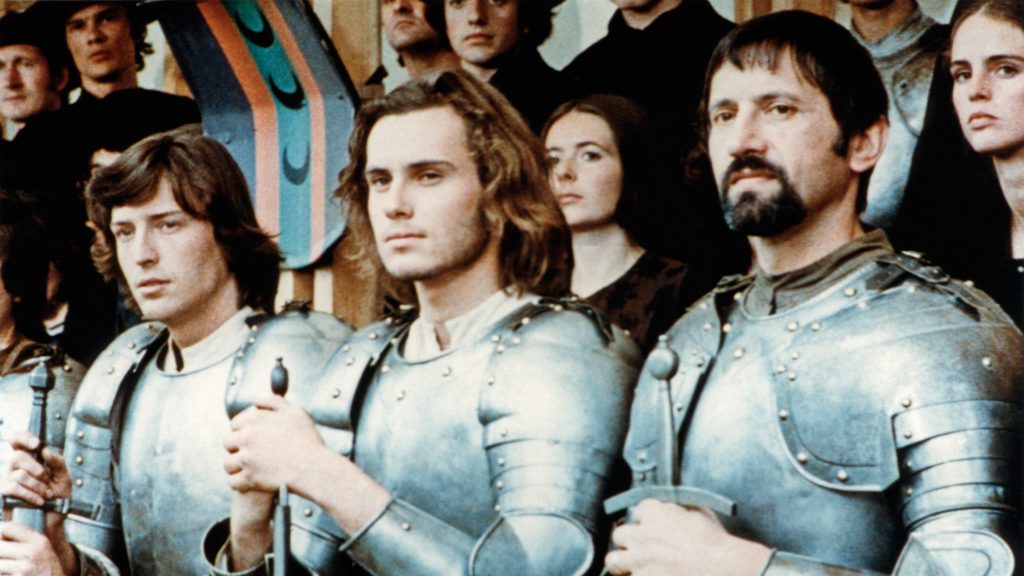The narrative of Lancelot du Lac (1976) is a familiar one. The film begins with the Knights of the Round Table returning from their quest for the Holy Grail in failure. Sir Lancelot (Luc Simon), once back in Camelot, resumes his affair with Queen Guinevere (Laura Duke Condominas). King Arthur’s knights break into factions, one led by Sir Lancelot and the other by Mordred (Patrick Bernhard), when the Queen is brought up on charges of treason. It is this conflict between Arthur’s knights, which leads to the immediate demise of Camelot.
Bresson casts his film in the tradition of Italian neo-realists such as Roberto Rossellini. By employing amateur actors Bresson endeavored to populate the film with singularly unique faces whose interactions would be so purely reactionary as to endow the film simultaneously with a naturalist believability and a natural artificiality with both working as organic responses from the films primary players. To heighten this effect Bresson also chose to use predominantly long takes that compel the audience to focus their gaze onto the behavioralism of the cast and characters. This makes for a highly nuanced effect in the interactions of the characters whose naturalist responses are in total juxtaposition to the plasticity of the films melodramatic narrative and design.

Bresson goes further still to discredit the environment of Arthurian legend; for his interests are in the morality of his films characters. The films opening is a montage of repeated actions (horseback riding, decapitation, mutilation, the crossing of swords) whose frequency of repetition negates any genuine motivation within the actions themselves and leaves the audience with a sense of futility in so far as it concerns the chivalrous actions of King Arthur’s knights. The derring-do of Hollywood retellings of the same story are concerned primarily with these shows of strength and chivalrous valor. The emphasis is almost exclusively this in Richard Thorpe’s film The Knights Of The Round Table (1953). The plasticity of action in Bresson’s film highlights the reality and therefore honesty in the portrayal of character’s relationships, primarily between Guinevere and Lancelot. These interactions between Lancelot and Arthur or Lancelot and Guinevere become the only organic components of Bresson’s film, contrasting uncomfortably with the superficiality of the films action sequences.
Often Bresson will sandwiche shots of the films location (landscape or setting) between scenes of action and scenes of character interaction (or one may say melodrama). Constantly Bresson is grounding his fantastic narrative into some sort of recognizable context. However, the duration of these shots is long enough to make the audience uncomfortable with what they are viewing, and after a time (many of these shots repeat throughout the film) the audience even begins to doubt the validity of these images.
This is what is crucial to understanding the purpose of Lancelot du Lac. Bresson is analyzing, via the retelling of Arthurian legend, the relevancy of European heritage and history. He is forever skeptical, and always insisting that the audience question or doubt the defining mechanisms of Arthurian myth. The one element of Arthurian legend he does not invite us to scrutinize is the validity of love between Lancelot and Guinevere and the necessity for romance in human relationships, as well as the negative ramifications of such relationships.
Despite what may seem like a long list of formalist complexities, Lancelot du Lac is an easily understood film. It is simple in it’s composition and moves leisurely in revealing its true agenda. The compositions of the visuals themselves are often so compelling that the film takes on a poetic quality despite itself.
